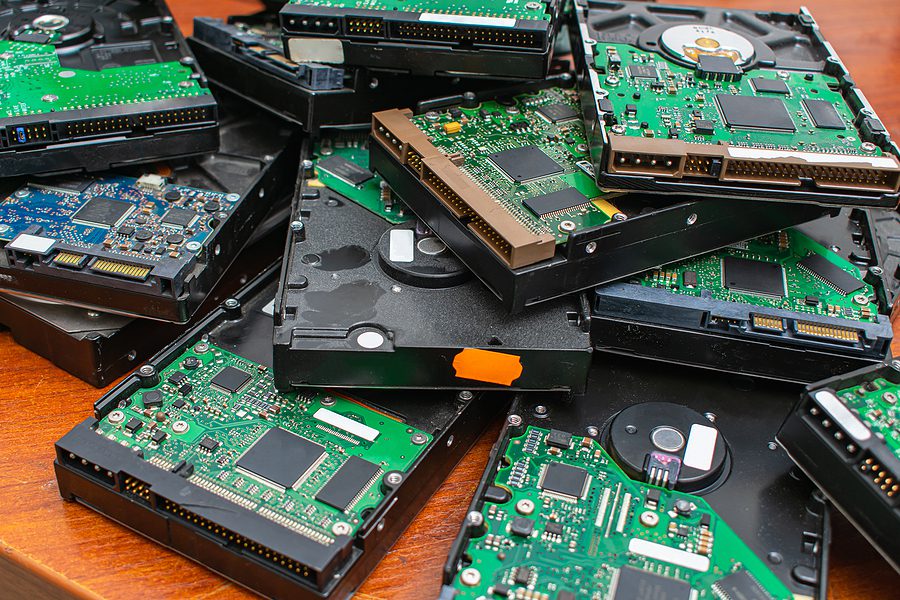Outdated Beliefs About Data Disposal Could Cost You Everything
You’ve just replaced your company’s old computers and servers with newer, faster tech. You’ve deleted the files, maybe even run a factory reset, or wiped the drives. Everything’s good, right? Not quite. That kind of thinking is what puts businesses at risk.
Despite how far technology has come, many people still believe that hitting “delete” or “reset” is all it takes to remove sensitive data. However, that data often resides in places that most users never see. And in the wrong hands, those leftovers can become a serious problem, leading to data theft, lawsuits, fines, and damage to a business reputation that’s hard to repair. It’s time to take a closer look at the outdated thinking around data disposal and what you stand to lose if you don’t.
“Delete” Doesn’t Mean Disappear
One of the most dangerous misconceptions is that deleting a file makes it vanish. On the surface, it looks like it’s gone. But under the hood, the data is still sitting there, just marked as “ready to be overwritten.”
Until new data comes along to fill that space, someone with the right tools (and not even very advanced ones) can recover it.
This isn’t theory, it happens all the time. Hard drives, USB sticks, and even printers can retain sensitive information long after the delete button has been pushed. If those devices end up resold, recycled, or even thrown away without being properly handled, that data becomes low-hanging fruit for identity thieves and hackers looking for information to sell.
Factory Resets Don’t Go Deep Enough
Think a factory reset on your phone or laptop wipes it clean? Think again.
While a reset does remove data from the user interface, it doesn’t always remove it from the storage itself. In many cases, the information can still be recovered using common software tools. It’s like wiping the chalkboard but leaving behind a faint outline of what was written before. To the average person, it looks clean. But to someone who knows where to look, it’s anything but.
This is especially risky for businesses getting rid of devices that were used for payroll, customer databases, healthcare information, or financial records. That data can’t just be “mostly gone.” It needs to be truly inaccessible and that takes more than a quick reset.
“Nobody Wants This Old Stuff Anyway” But They Might
Disposing of outdated technology improperly, whether by throwing it out, donating it, or selling it, can lead to serious consequences if someone digs into the device and finds sensitive data that was never entirely erased. Regulatory bodies are counting on you to protect personal and sensitive information, no matter how old the device it’s stored on is. It’s not just hard drives you need to worry about. Printers, copiers, smartphones, tablets, and networked office equipment all store data that can be easily overlooked.
Compliance Doesn’t Stop at Deletion
Many industries are governed by laws that dictate how data is to be handled, even after its life cycle has ended. Whether it’s HIPAA, GDPR, FACTA, or other data protection regulations, companies are expected to protect the information they collect, from the moment it’s captured to the moment it’s destroyed.
If you don’t follow proper disposal practices, you’re opening the door to significant penalties. We’re talking about fines in the thousands or even millions, depending on the data involved and the regulations you’re under.
It’s not just about the money, though. A single incident of mishandled data disposal can destroy customer trust, damage your brand, and trigger long-term fallout that takes years to repair.
“We’ll Just Wipe the Drive Internally” Spoiler: That’s Not Always Enough
Some companies try to handle data destruction in-house to save money. While that might sound practical, it opens the door for things to go sideways.
Wiping software alone doesn’t guarantee the data is gone, and you’re left with a false sense of security. It only takes one device slipping through the cracks to create a major problem.
Physical destruction like shredding, degaussing, or crushing goes far beyond wiping. These processes make data truly unrecoverable by damaging the media itself.
The Cost of Getting It Wrong
When people talk about data breaches, they often think of hackers and cyberattacks. Improper disposal of old devices is actually one of the easiest ways for sensitive data to leak out and it’s entirely avoidable.
What Safe Disposal Actually Looks Like
So, what should data disposal really look like? It starts with knowing what’s stored where. From there, you can make informed decisions about how to handle each device based on the sensitivity of the data and how the hardware was used.
That may involve:
- Physically shredding or destroying hard drives and media.
- Using certified data erasure tools that follow strict standards.
- Partnering with a reputable data destruction provider that offers documented chain-of-custody and certificates of destruction.
Don’t Let Old Beliefs Catch You Off Guard
Most businesses wouldn’t dream of leaving their server room unlocked. When you rely on outdated ideas about data disposal, that’s effectively what you’re doing—leaving the door open and hoping nobody walks through.
Whether you’re replacing a single laptop or decommissioning a full server room, secure destruction isn’t an extra step, it’s the final step in protecting your data.
Don’t give your information a second life somewhere you never intended. Make sure it’s gone for good with us. Contact AccuShred today to schedule secure, certified data destruction and keep your information out of the wrong hands.








